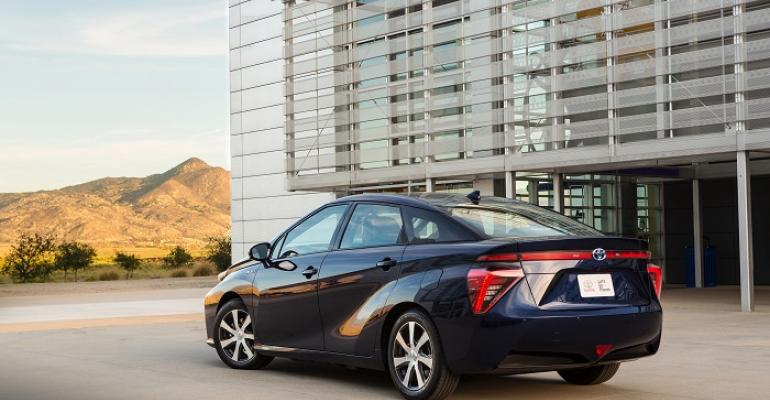TOKYO – Taking its cue from BMW’s LifeDrive architecture, at least one Japanese resin supplier and as many as three are gearing up for a big increase in demand for carbon fiber-reinforced plastic components.
Toray Industries, which has been supplying carbon fiber to the auto industry for nearly 20 years, anticipates demand for the material will double or even triple to between 10,000 and 15,000 metric tons by 2020, up from an estimated 5,000 t at present, then grow again to as much as 20,000 t in 2025 including material supplied by Japanese rivals Teijin and Mitsubishi Materials.
Outside Japan, Germany’s SGL Group is the main supplier to BMW for the carbon fiber used in the automaker’s i3 and i8 models along with the luxury 7-Series.
SGL also supplies the carbon-fiber rear bench for the new Audi A8 and Lamborghini Huracan and the glass fiber-based leaf springs for the Mercedes Sprinter, Volkswagen Crafter and Volvo XC90.
A Toray executive expects the biggest increases in use of the material to be seen in floor and door-structural panels for upscale and sporty cars such as the Audi A8, Nissan GT-R and Skyline coupes, Honda NSX and Accord Sport, and unspecified Lexus and Mercedes-AMG models.
Previously, Toray fibers were adopted by Porsche for outer panels in the Carrera GT, BMW for roofs in the M3, Mitsubishi for spoilers in the Lancer Evolution VII and IX models, and Nissan for front-end modules in the Infiniti Q35.
Other models, past and present, using carbon fiber include the Mercedes SLR McLaren for outer panels, tubs, seatback shells and bumper supports; Nissan 350Z, 370Z and GT-R for driveshafts; Mazda RX-8 and Aston Martin Lagonda DB9 and V8 Vantage luxury sports cars for driveshafts; Subaru WRX STI for the roof; and the Lexus LFA’s cabin, roof and chassis structure.
Applications Include FCEV Fuel Tanks
Toray also expects growth in high-pressure fuel tanks for hydrogen-fuel-cell vehicles, including the Toyota Mirai it already supplies. It also provides fiber for the fuel-cell stack’s frame.
Cost remains a major deterrent to wider usage of carbon fiber, but new processing technology is lowering the reinforced polymer’s costs. So are a growing number of tie-ins with automakers and suppliers, notably specialty molders.
In 2011, Toray formed a joint venture with Daimler to develop carbon-fiber components. Based in Esslingen, Germany, Euro Advanced Carbon Fiber Composites began producing carbon-fiber components including trunk lids in 2012. In 2013 the JV bought a 20% stake in Plasan Carbon Composites of Walker, MI. It opened a production facility in Thailand in February.
Toray produces polyacrylonitrile-based carbon fibers. Chief applications are aircraft structural parts, windmill blades and sporting goods including golf club shafts and tennis rackets.
Japan’s Yano Research Institute predicted in 2014 that prices of carbon-fiber-reinforced thermosetting resin would decline from ¥5,000-¥6,000/kg ($108-$130/lb.) to ¥2,000-¥3,000/kg ($43-$65/lb.) by 2025, due to shorter molding hours, lower material costs and improved yield.




